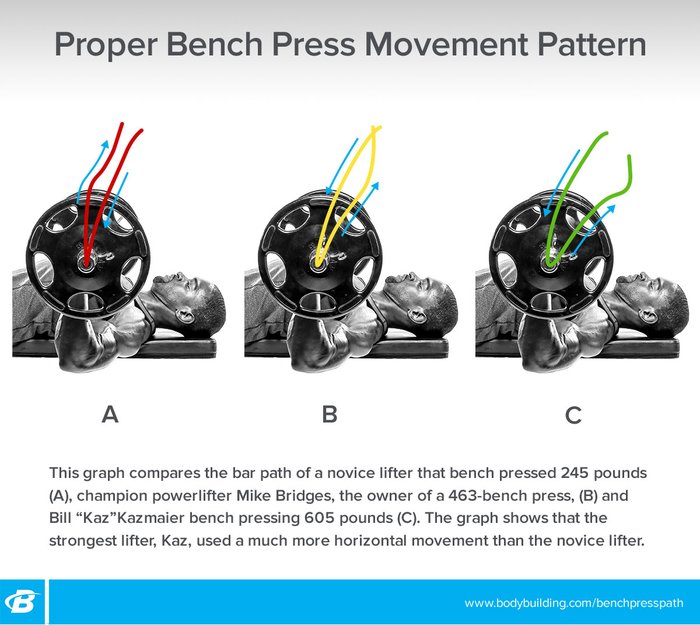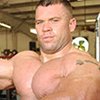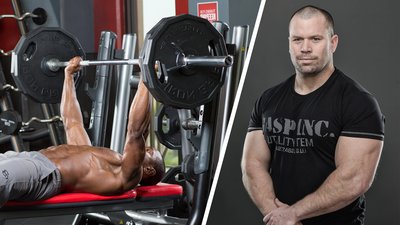Question: My goal is to bench press as much as possible raw. An old-school, turn-of-the-millennium powerlifter at my gym keeps yelling at me to bench press the bar in a straight line. Doing so feels awkward to me. What should I do?
You've asked the right person. I was the youngest person to bench press 600 pounds raw, until a student of mine, Peter Edgette, surpassed me. I've coached more than a dozen 600-pound-raw bench pressers, four of whom have benched more than 300 kilograms, or 661 pounds. I've also written a best-selling book on the bench press. So, if I rant and rave a bit on this topic, I hope you'll understand.
Bench Shirts Were In: Now They're Out
Before I answer your question, let me digress a little bit. A couple of decades ago, nearly all powerlifters competed while wearing bench-press shirts. These shirts enabled some lifters to add more than 400 pounds to their unassisted lift.
Back then, the objective was to use specific techniques and manipulation to maximize the contribution the shirt could make to a bench press. For instance, lifters wearing the shirt touched the bar much lower at the bottom of the lift and attempted to press the bar in a straight line, making it a totally different lift from the traditional raw bench press.
A raw bench has an ascending strength curve, which means that the lift is most difficult at the bottom. A shirted bench reverses this because the shirt eliminates the need to produce drive off the chest. The mechanics of the shirt took care of that, enabling lifters to blow past any sticking points and set some big records in the process.
In the last 10 years or so, however, a majority of lifters have switched to benching raw, which I think is awesome! So, the information I'm about to give you is designed for people who want to get big bench scores without the designer wear.
Straight Up Is Straight Wrong
Now let's talk about the actual lift. Although there is always some variability when you bench press raw, you want to lower the bar to just below your nipple line. To raise the bar back up, you might think that the shortest path—pressing the weight in a straight line—would be best. Actually, no, it's not.
If you study videos of the world's best bench pressers, you'll see that they push the weight back and up in what's called a j-curve.

This path works so much better because it allows you to recruit all the joints and working muscles (hand, wrist, elbow, triceps, chest, and shoulders) that should be involved in a big lift. Recruiting this combination of body parts allows you to build a solid foundation that can help bump up your PR.
In contrast, try to push the bar straight up, and you're forcing much smaller forearm and triceps muscles to do the heavy lifting, which they just can't handle.

